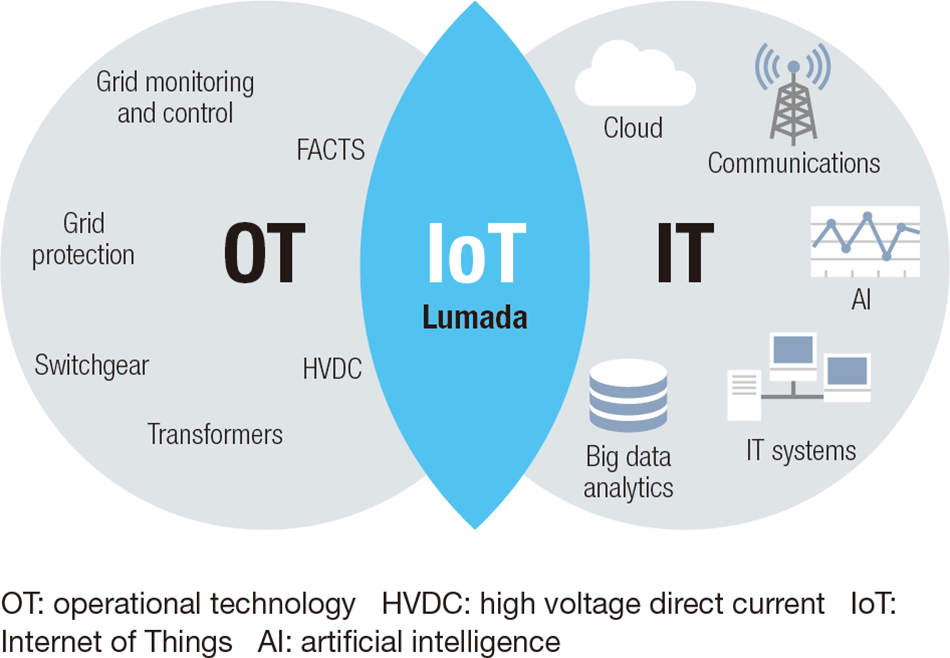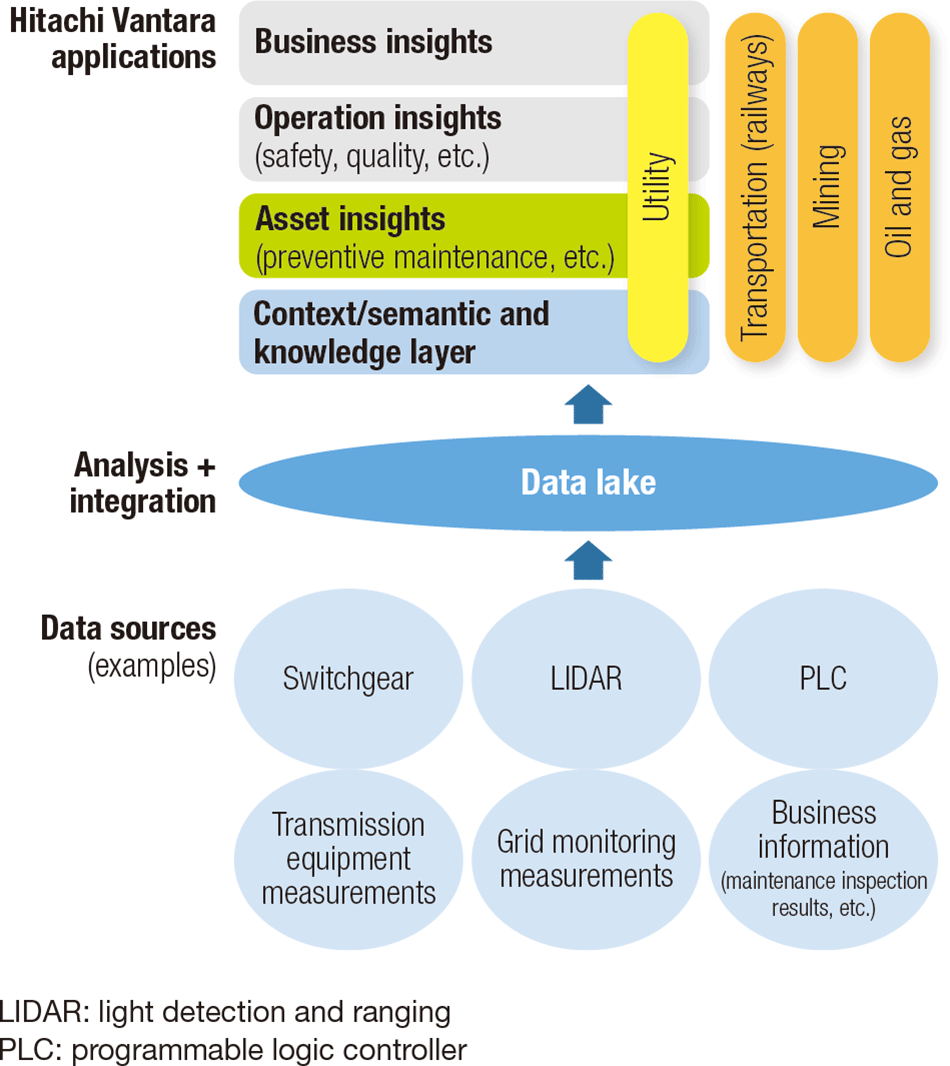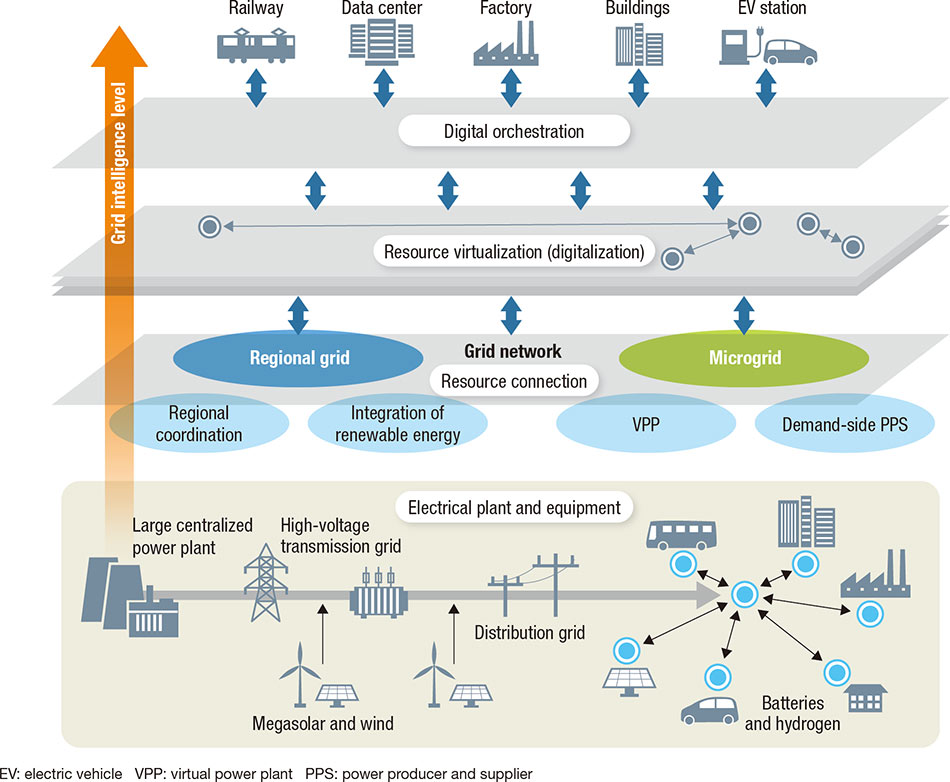COVER STORY:ACTIVITIES 1Achieving a Sustainable Society through Digital Innovation in the Electric Power Industry—Establishing Digital Solutions for the North American Power Grid—
Highlight
The deregulation of electricity retailing, combined with greater adoption of renewable energy sources and distributed generation have produced advances in digital technologies that are bringing major changes to the energy industry. This trend is occurring throughout the global market and in the electric power industry in particular. The changing nature of this industry is driving the value chain towards more sophisticated ways of operating power plants, maintaining equipment, realigning roles, and reordering the relationships between suppliers and consumers. The traditional model is evolving toward a system of supply and demand, away from the tightly regulated systems and practices that once governed the main grid. With this as a backdrop, electric utilities are starting to recognize that the use of digital technologies will result in superior operating decisions that are based on effective data management. For example, greater integration and compatibility between in-house systems incorporating field data from the grid can use that data for improving performance measures. In North America, a market where electric utilities number more than 3,000 companies, Hitachi is engaging in collaborative creation with customers in order to incorporate digital solutions that address the challenges facing customers. These solutions will make use of Hitachi’s own comprehensive capabilities.

Adopting Digital Technology in the Electric Power Industry
The business environment in which the electric power industry operates is undergoing change, facing among other things, regulatory reforms that involve retail deregulation, the separation of generation and transmission assets, and the establishment of a balanced energy market. Political and regulatory pressures are shifting the priorities of the electric power market toward new metrics such as adoption of renewable energy resources to meet stricter environmental expectations, achieving greater cost reductions, and improving resiliency and security.
The growing addition of renewable energy resources, with their fluctuating output, is increasing the operational complexity of the power grid. These fluctuations affect supply and demand load balancing, voltage control, power flow calculations, and power generation planning.
The use of digital solutions enables faster and more efficient system control by using data to predict and optimize operational decision making and risk reduction.
The Electric Power Industry in North America is in a Period of Rapid Change
While the European Union has taken the lead in electric power innovations, especially decarbonization, the USA is also making progress. The US market, with total annual generation of four trillion kWh, has increased renewable energy generation by more than 280 billion kWh from 2010 to 2017 using mainly wind and solar resources. Coal-fired generation during this period fell by 640 billion kWh. Use of renewable energy in North America reflects the different regional attributes, with solar providing 16% of generation in California and wind providing 15% in Texas. One factor behind this shift to renewable energy is the Renewable Portfolio Standard (RPS), which requires states to obtain a certain proportion of their electricity supply from renewable sources. Twenty-nine states, as well as Washington D.C., having signed up for this as of October 2018(1).
Action on US Electric Utility’ Management Challenges and Digitalization
Fig. 1|Progress on Digitalization by Electric Utilities in North America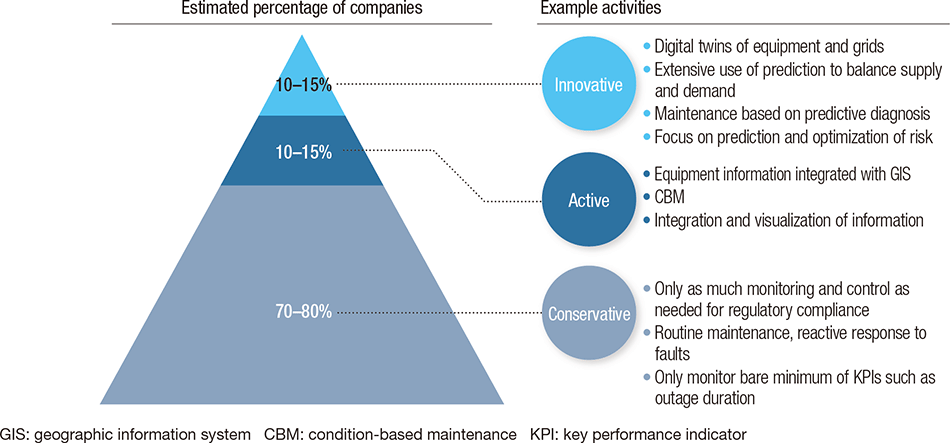
Table 1|Value Steps at Different Levels of Customer Progress on Digitalization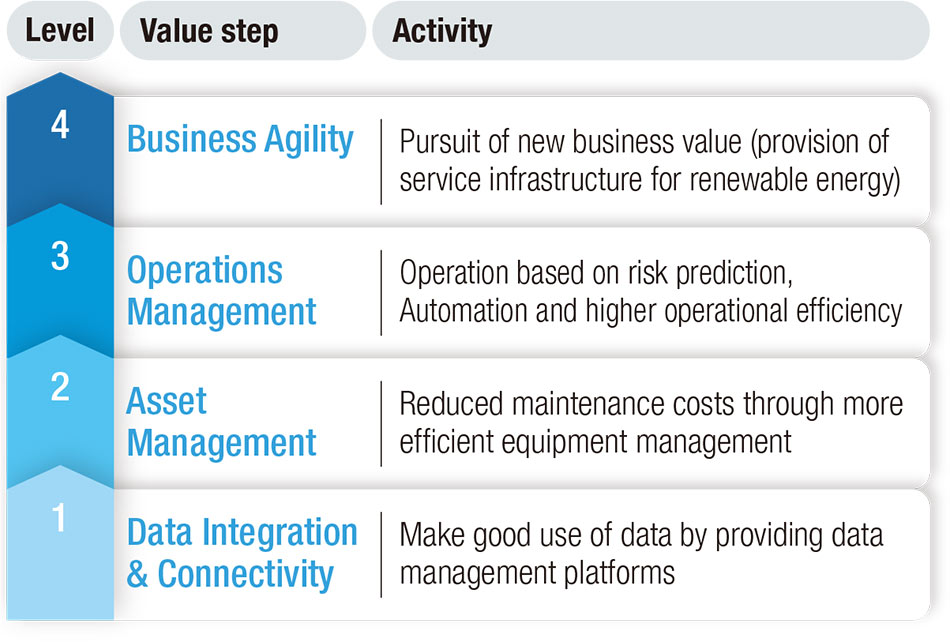
In the current environment, North American transmission and distribution utilities are looking at investing in enhancements to grid operation resulting from the increasing use of renewable energy and improving asset management of equipment. Moreover, people are also starting to think about the use of digital technologies in terms of how they can mitigate various forms of risk while also keeping their businesses economically viable.
Recent events are causing many utility operators to become even more risk conscious. For example, when lack of maintenance on aging transmission lines was blamed for wildfires in California, it led to stiff penalties and lawsuits, requiring one company to file for protection under Chapter 11 of the US Federal Bankruptcy Code (equivalent to Japan’s Civil Rehabilitation Act). This has had a severe impact on the security of electricity supply, with outages known as “public safety power shut-offs” (PSPSs) continuing to be imposed on windy days in order to prevent new fires. As a result, businesses and residents often experience intermittent power outages with some lasting several days at a time.
This is not to say, however, that adoption of digital solutions by electric utilities as a means of addressing these issues is necessarily progressing. For example, Figure 1 shows the various separately implemented in-house systems at many electric utilities that have not yet been integrated, leaving data widely dispersed among them. As a result, these companies are only now beginning to come to grips with the issues, which include shortages of data integration infrastructure and data analytics as well as a need for better understanding by staff of digital technologies in general. Another problem resulting from data being widely scattered is that management lacks the data it needs to make better decisions and the means to access it.
To facilitate the awareness of digital solutions that address the challenges facing customers, Hitachi has defined “value steps” that represent a path for guiding electric utilities along their digitalization journey (see Table 1). By doing so, the aim is to deliver value in a form appropriate to the level and challenges of each customer and to enable planning for moving up these steps.
Development Strategy for Digital Solutions
To create comprehensive digital solutions, Hitachi combines deep IT expertise with extensive operational technology (OT) experience. The union of Hitachi Transmission and Distribution Solutions (HTDS) and Hitachi Vantara integrates the OT abilities of HTDS through detailed knowledge of transmission and distribution (T&D) systems and Hitachi Vantara’s renowned IT capabilities in the field of data management and Internet of Things (IoT) solutions (see Figure 2 and Figure 3).
This allows collaborative creation with customers to make strategic use of Hitachi’s knowledge of products and data management capabilities. Examples include intimate knowledge of switchgear and transformers, expertise in the provision of associated services, extensive customer network in North America, cloud service delivery, flexible and highly reliable data management services, and the ability to leverage the portfolio of existing solutions(2) available on Lumada for delivering immediate results. Hitachi also plans to utilize arrangements with third parties to provide customers with comprehensive value in the form of products, solutions, and services.
Fig. 4|Acoustic Diagnosis for Transmission and Distribution Infrastructure
Fig. 5|Mapping of Vegetation Distribution from Satellite Images
- Data management
Making consolidated use of data dispersed across different platforms poses a challenge. A data lake is created by using the cloud to collect not only grid monitoring and measurement information via supervisory control and data acquisition (SCADA) systems and phasor measurement units (PMUs), but also business system data, video analytics, and other sensory data from surveillance systems. The provision of cybersecurity services is another important challenge. Hitachi is looking at offering a cybersecurity solution that complies with the North American Electric Reliability Corporation Critical Infrastructure Protection (NERC-CIP) standards(3) to provide security not only for IT systems, but also for the monitoring and control of OT equipment. - Preventive maintenance
One of the challenges related to maintenance of aging transmission and distribution infrastructure, such as transformers and switchgear, is understanding how to use adaptive sensors that are also low-cost and non-contact. In response, Hitachi is diagnosing the condition of transmission and distribution equipment based on sound emissions by using techniques for precise sound source separation to eliminate environmental noise and for the detection of abnormal sounds(4) (see Figure 4). - Vegetation management
Another management challenge for US electric utilities is how to reduce the cost of vegetation management work to prevent trees from coming into contact with power lines. This is recognized as a major issue particularly in the west, northeast, and south where rapid vegetation growth rates and dry seasonal climates raise the risk of wildfires. Since most power lines are located in rural regions that are difficult for people to access, there has been interest in remote sensing techniques that can identify the encroachment of trees onto power lines from a distance. Satellites and drones are two such methods.
As a means of vegetation management for electric utilities, Hitachi is currently deploying a technique for assessing plant growth from satellite images that was originally developed for agricultural applications (see Figure 5). - Digital twins for risk management
Given the aging of transmission and distribution infrastructure such as transformers and switchgear and the shortage of experienced workers due to an aging population and low birth rate, reforms are needed to keep pace with existing levels of service quality while still keeping costs under control. In response, Hitachi has been studying the use of the use of operation and maintenance (O&M) digital twins in order to provide ongoing maintenance of equipment based on actual conditions (see Figure 6). Specifically, this involves developing techniques for assessing the condition of pieces of equipment from their digital twins to determine optimal maintenance planning, parts procurement and stocking, team structures, and workflows by augmenting time-based maintenance (TBM) with condition-based maintenance (CBM) according to the prediction of equipment faults.
Meanwhile, the importance of being able to predict damage that will have an impact on power system operation and rapid recovery from major incidents is increasing as natural disasters become more frequent and severe due to environmental problems such as global warming. Hitachi is responding by investigating systems for the transmission and distribution business that take an integrated approach to risk, incorporating non-equipment information such as weather forecasts and disaster damage into digital twins that extend to the grid level.
Working Toward Intelligent Grids
The progress of digital technologies such as the IoT and artificial intelligence (AI) is raising expectations for the definition of new energy platforms and the emergence of new services. It is expected that the future energy industry will be among those making progressive use of virtualization and the abstraction of energy layers. This will usher in a shift in competitive focus toward higher forms of value such as the on-demand supply of renewable energy (see Figure 7). Hitachi’s aim is to provide energy infrastructure with flexible and resilient operation through synergies between digital innovation and a changing business environment that encompass growing use of renewable energy, a shift to distributed generation, and the liberalization of electricity retailing, which are based on the values and decisions of a wide variety of electric utilities and end users.
REFERENCES
- 1)
- U.S. Energy Information Administration, “Annual Energy Outlook [2010-2020]”
- 2)
- Lumada Customer Cases
- 3)
- North American Electric Reliability Corporation, “CIP Standards,”
- 4)
- Hitachi News Release, “Sound Recognition AI for Machine-Condition Diagnosis in Factories,” (Nov. 2018) in Japanese.





